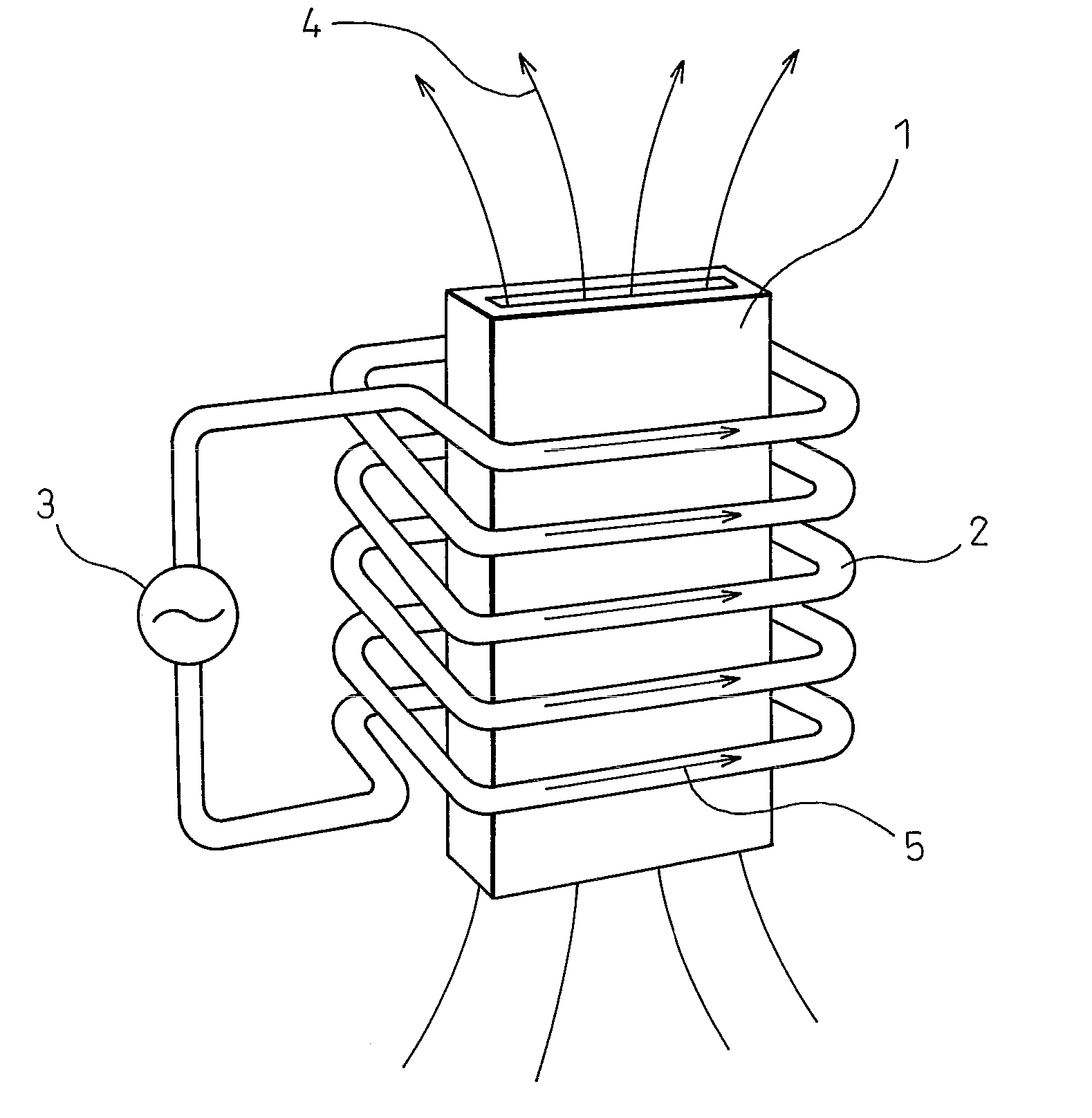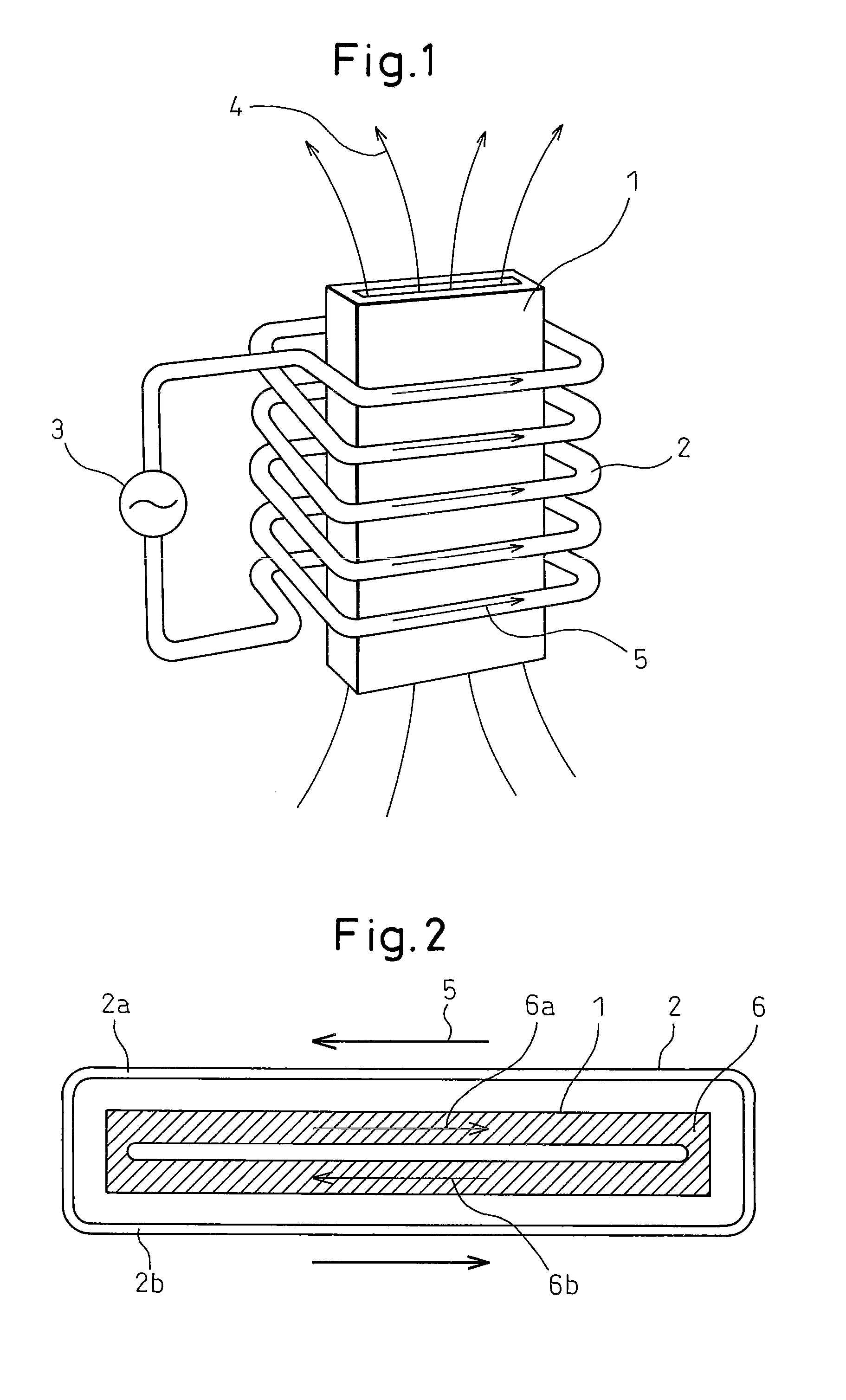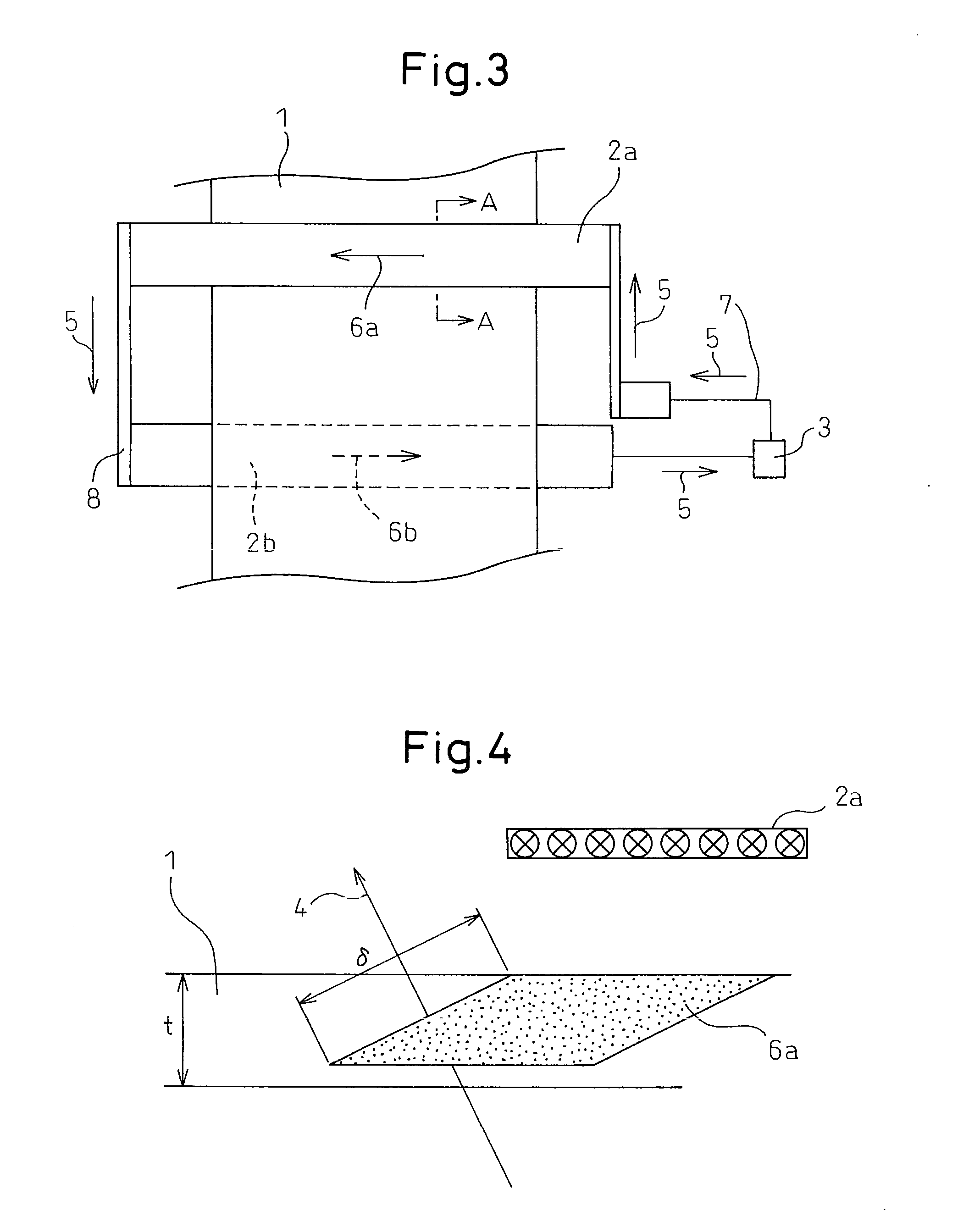Induction heating apparatus
a technology of induction heating and heating chamber, which is applied in the direction of electric/magnetic/electromagnetic heating, furnaces without endless cores, coil arrangements, etc., can solve the problems of increasing the capacity of the heating apparatus, the temperature distribution is less uniform, and the non-magnetic materials and magnetic materials having a small thickness cannot be heated, so as to achieve the effect of increasing or decreasing the capacity
- Summary
- Abstract
- Description
- Claims
- Application Information
AI Technical Summary
Benefits of technology
Problems solved by technology
Method used
Image
Examples
example 1
[0099]In order to confirm advantageous effects of the present invention, an experiment was conducted for heating a nonmagnetic steel plate of SUS304 having a thickness of 0.5 mm and a width of 800 mm while passing it.
[0100]The power source that was used was a high-frequency power source of 10 KHz and a max. of 100 KW. By using a matching capacitor for adjusting the resonance frequency, matching was attained by increasing or decreasing the capacity of the matching capacitor to meet the inductance of the induction coils. The induction coils that were used were one-turn induction coils made from a water-cooled copper plate obtained by brazing a water-cooled copper pipe of an outer shape of 10 mm and an inner diameter of 8 mm onto a copper plate of a width of 150 mm and a plate thickness of 10 mm on the side (outer side) opposite to the steel plate. In this Example, the conductor includes both the copper plate and the copper pipe. A gap was 200 mm between the induction coils and the SUS...
example 2
[0109]Induction coils of the shape of FIG. 8 were used, and a difference in the temperature distribution for heating was measured by using and not using the magnetic cores. The induction coils possessed a width of 150 mm like in Example 1, possessed long sides (sides on the outer sides in the direction in which the metal plate traveled) of a length of 50 cm over the portions where the front and back conductors were in parallel in the central portion of the plate, and possessed front and back conductors slanted at 45° toward both edge portions. The front and back induction coils were so arranged that the distance between the inner sides thereof was 20 cm in the direction in which the SUS304 plate traveled when they were vertically projected. As Example H of the invention, the heating was effected by inserting the magnetic cores of the U-shape having a width of 5 cm, a thickness of 2 cm, a height of 50 cm and a depth of 20 cm used in Example 1 inward from the edge portions of the meta...
example 3
[0111]The front and back induction coils of a width of 150 mm were arranged being separated apart by 200 mm and slanted at 45° as shown in FIG. 14, and the temperature deviations were compared depending upon when the magnetic cores were arranged at the edge portions of the SUS304 plate and when they were not arranged. The magnetic cores that were used were the same as those of Examples 1 and 2. The temperature deviations were compared by pushing in the magnetic cores at a position 100 mm separated away from the points where the induction coils traversed the edge portions of the SUS304 as Example J of the invention and by using no magnetic core as Comparative Example K. In the case of Comparative Example K using no magnetic core, the temperature deviation ratio was 3.2 while in the case of Example J using the magnetic cores, it was confirmed that the temperature deviation ratio was improved up to 1.9.
PUM
 Login to View More
Login to View More Abstract
Description
Claims
Application Information
 Login to View More
Login to View More - R&D
- Intellectual Property
- Life Sciences
- Materials
- Tech Scout
- Unparalleled Data Quality
- Higher Quality Content
- 60% Fewer Hallucinations
Browse by: Latest US Patents, China's latest patents, Technical Efficacy Thesaurus, Application Domain, Technology Topic, Popular Technical Reports.
© 2025 PatSnap. All rights reserved.Legal|Privacy policy|Modern Slavery Act Transparency Statement|Sitemap|About US| Contact US: help@patsnap.com



